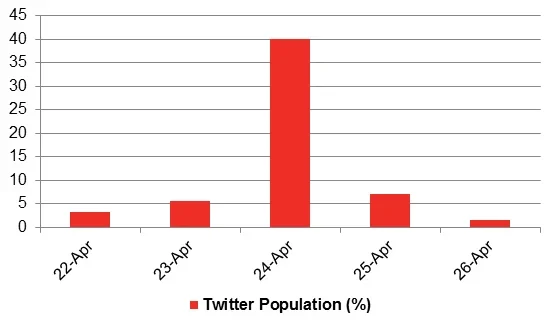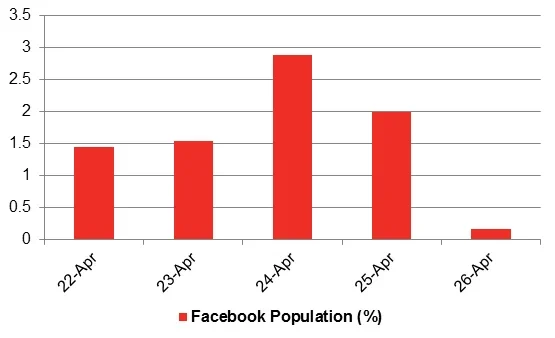On April 24 it was announced that the planned sale of 631 UK bank branches by Lloyds Banking group to the Co-op group had fallen through.
After more than a year of discussions, the Co-op pulled out from a deal that would have created a 974-strong branch network (three times its current size) and made it the seventh biggest bank in Britain. This would have increased competition amongst Britain’s high street banks. However, the Co-op blamed the continued economic downturn and tougher regulations imposed on banks as the reason why it was unable to complete the transaction.
Using YouGov’s social media analysis tool, SoMA, we can see a noticeable increase in reach on both Twitter and Facebook on the date of this announcement.
The total UK Twitter population who heard about the Co-op jumped from 3.2% and 5.7% on April 22 and 23 respectively, to 40.1% on April 24.

Similarly, we can see that the number of people on Facebook who heard about the Co-op almost doubled from 1.5% on April 23 to 2.9% on April 24. Whilst this increase is not as considerable as on Twitter, the much greater UK Facebook population means that this increase is indeed significant.

Using SoMA we can see that the most popular words mentioned alongside Co-op on this day included “Lloyds”, “branches”, “deal”, “bank”, “sale” and “collapses”. Therefore, we are in no doubt that the news about the collapsed sale of Lloyds TSB branches to the Co-op is the reason behind the spike in the number of people on Twitter and Facebook who had heard about the brand.
SoMA also enables us to measure the demographic audiences that heard about the Co-op on both Twitter and Facebook. Most notably, on Twitter 59% of those who had heard about the Co-op were male, while on Facebook 53% of those who had heard about the Co-op were female. Similar analysis can also be performed on region, age and income brackets. For example, younger people were more likely to have heard about the Co-op on Twitter, with a 14% reach of those aged 18 to 24 (compared to 10% on Facebook); whereas older people were more likely to have heard about the Co-op on Facebook, with a 23% reach of those aged 55 and over on Facebook (compared to 16% on Twitter).
This analysis highlights the growing power of social media in the impact of a news story. As well as indicating what is heard, SoMA also offers crucial insights into what demographic audiences heard about the Co-op on Facebook and Twitter.






